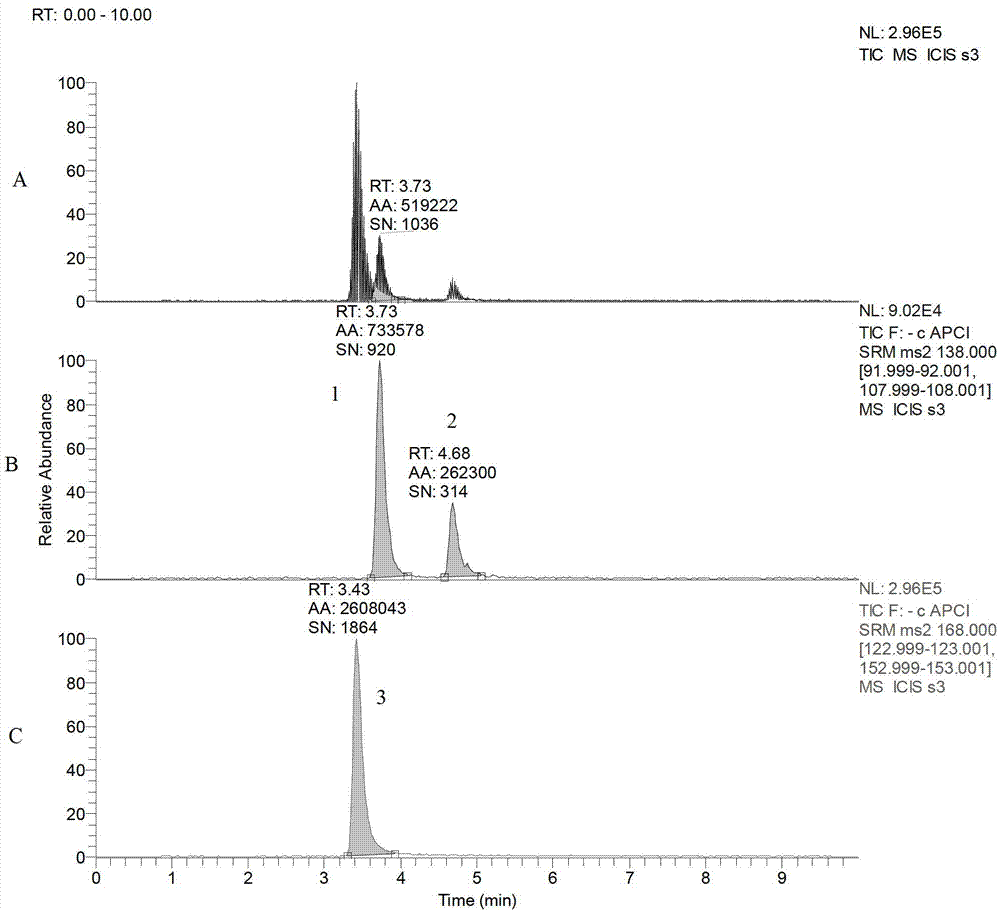Method for detecting residual quantity of sodium nitrophenol in aquatic product
A technology of sodium nitrophenolate and sodium o-nitrophenolate, which is applied in the directions of measuring devices, instruments, scientific instruments, etc., can solve the problems of low accuracy, cumbersome operation process, cumbersome operation steps and the like
- Summary
- Abstract
- Description
- Claims
- Application Information
AI Technical Summary
Problems solved by technology
Method used
Image
Examples
Embodiment 1
[0068] The mensuration of sodium nitrophenolate residual amount in the eel of embodiment 1
[0069] 1. Instruments and equipment used in this embodiment: LC / APCI-MS / MS liquid chromatography-tandem mass spectrometer
[0070] (1) HPLC part (Thermo Fisher company, model Surveyor), using MS high-pressure liquid phase pump, equipped with automatic sampler, column thermostat, using CAPCELL PAK C 18 Reverse-phase chromatographic column, 150mm×2.1mm, 5μm.
[0071] (2) TSQ Quantum Access mass spectrometer (Thermo Fisher): equipped with APCI ion source, triple quadrupole, collision cell, vacuum system, and gas path control system;
[0072] (3) Ultrasonic cleaner (Kunshan Ultrasonic Instrument Co., Ltd., model KQ-600DE);
[0073] (4) High-speed refrigerated centrifuge: 10000r / min (HITACHI, model CR22G);
[0074] (5) High-speed centrifuge: 4000r / min (Thermo Fisher);
[0075] (6) Vortex mixer (Talboys);
[0076] (7) Rotary evaporator (German Heidoplh company, model Laborota4000);
[...
PUM
| Property | Measurement | Unit |
|---|---|---|
| current | aaaaa | aaaaa |
Abstract
Description
Claims
Application Information
 Login to View More
Login to View More - R&D
- Intellectual Property
- Life Sciences
- Materials
- Tech Scout
- Unparalleled Data Quality
- Higher Quality Content
- 60% Fewer Hallucinations
Browse by: Latest US Patents, China's latest patents, Technical Efficacy Thesaurus, Application Domain, Technology Topic, Popular Technical Reports.
© 2025 PatSnap. All rights reserved.Legal|Privacy policy|Modern Slavery Act Transparency Statement|Sitemap|About US| Contact US: help@patsnap.com



